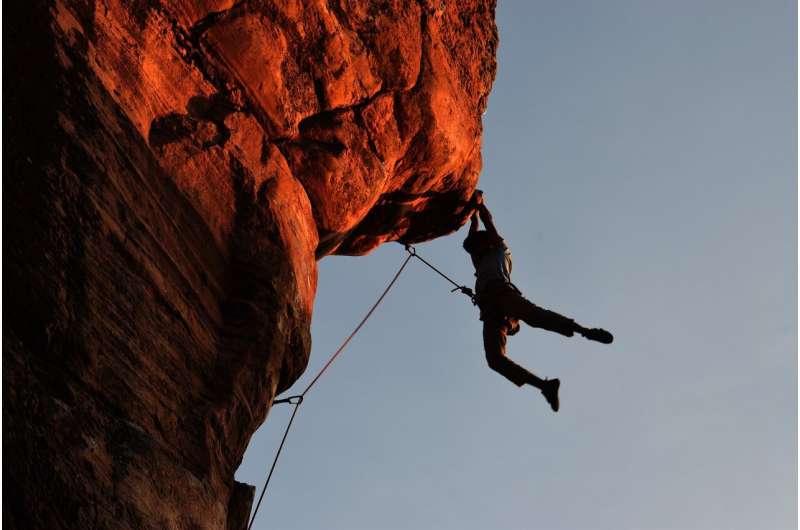This article has been reviewed according to Science X's editorial process and policies. Editors have highlighted the following attributes while ensuring the content's credibility:
fact-checked
trusted source
proofread
Study finds that cliffhangers keep audiences... [to be continued]

Are cliffhangers a maddening way for writers to end an otherwise great story? Every audience member is likely to have an opinion, but despite the long history of cliffhangers, there has been little research done to study how audiences respond to the use of this common plot device.
That knowledge gap has now been addressed by a University at Buffalo research team with a study that suggests these popular narrative conclusions are not necessarily a buzzkill when compared to endings that have either the hero or the villain coming out on top.
Suspense is at the cliffhanger's core, but suspense can leave audiences in a "noxious" state, according to Lindsay Hahn, Ph.D., an assistant professor of communication in the UB College of Arts and Sciences, and corresponding author of the new paper published in the journal Media Psychology.
"We don't like suspense," says Hahn, an expert in media effects. "We like when suspense is resolved, and resolving this noxious state makes it more likely for an audience to move to a story's next installment."
Audiences generally like plots that end with the protagonist winning and they tend to dislike stories where the antagonist prevails. So the research team—led by Katherine Schibler, a UB graduate student, and rounded out by co-author Melanie Green, Ph.D., a UB professor of communication—asked nearly 500 participants across two studies to read the same narratives that had one of three different conclusions: a cliffhanger, a protagonist victory or an antagonist victory. The narratives' climactic scene, appropriately enough, was set at the edge of a cliff.
"Cliffhangers are not less enjoyable than positive endings, nor more enjoyable than negative endings—they're right in the middle," she says. "Cliffhangers are a good way to encourage an audience to continue to the next installment of a story, but writers can include them as a narrative device without necessarily sacrificing audience enjoyment along the way."
The prominence of narrative cliffhangers dates from at least the 19th century, when Charles Dickens published "The Old Curiosity Shop" as serial. The story created such interest in the protagonist's fate that readers reportedly stood waiting on the docks of New York Harbor for the ship to arrive from England with copies of the magazine containing the series' next chapter.
Television has also produced through the years many memorable cliffhangers, but for their study, the researchers focused on a written narrative rather than video. Many television cliffhangers are just an episode away from resolution. Streaming services also make it possible to watch an entire season in a single sitting. But the process for writing and publishing a book moves at a different pace than television, with readers often waiting years for another installment, if it arrives at all.
"We're still in a culture that reads a lot," says Hahn. "It's important to understand how audiences engage with various forms of written entertainment.
"And this paper suggests that cliffhangers keep audiences coming back for more."
More information: Katherine Schibler et al, Investigating Responses to Narrative Cliffhangers Using Affective Disposition Theory, Media Psychology (2023). DOI: 10.1080/15213269.2023.2219456
Provided by University at Buffalo



















